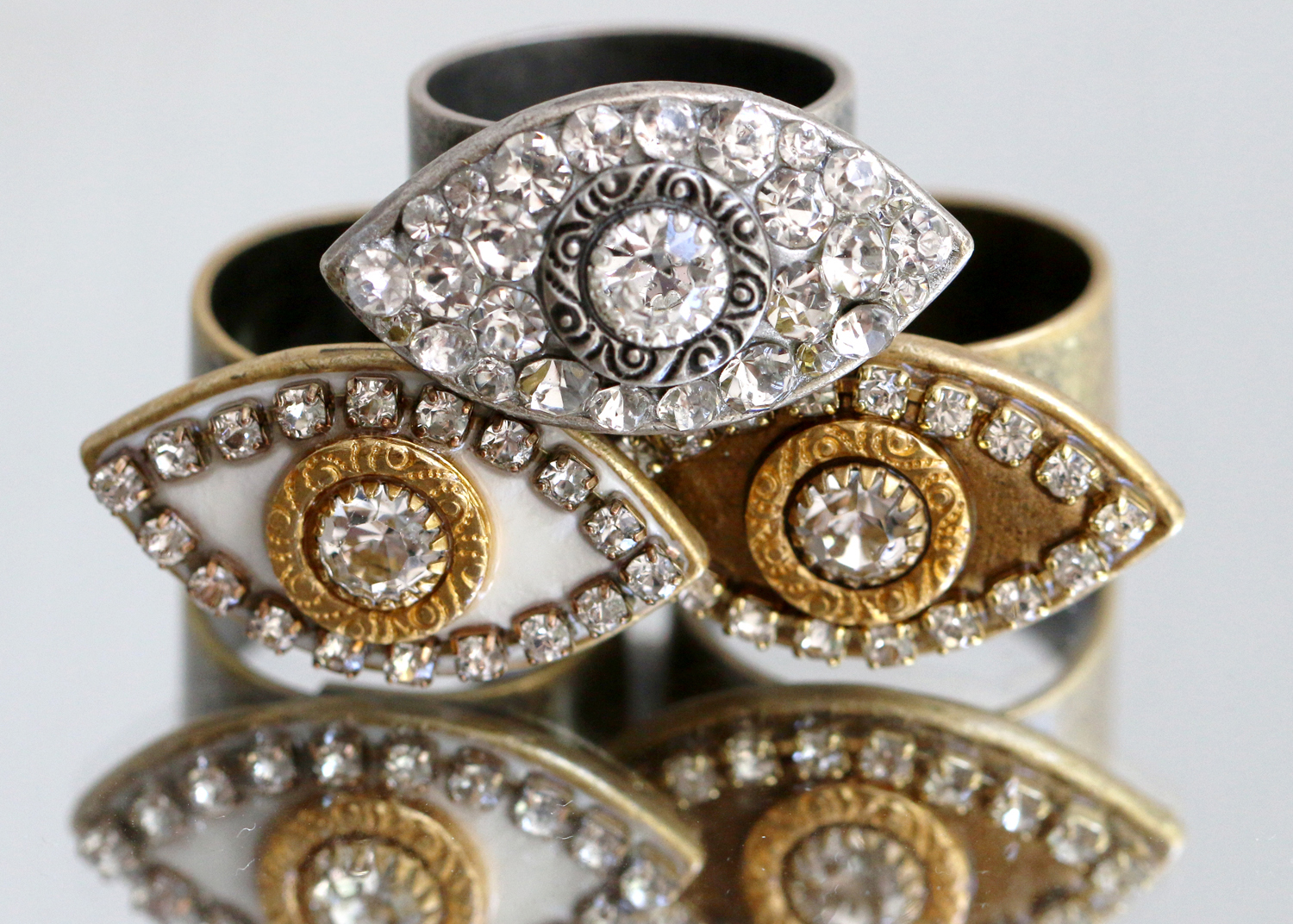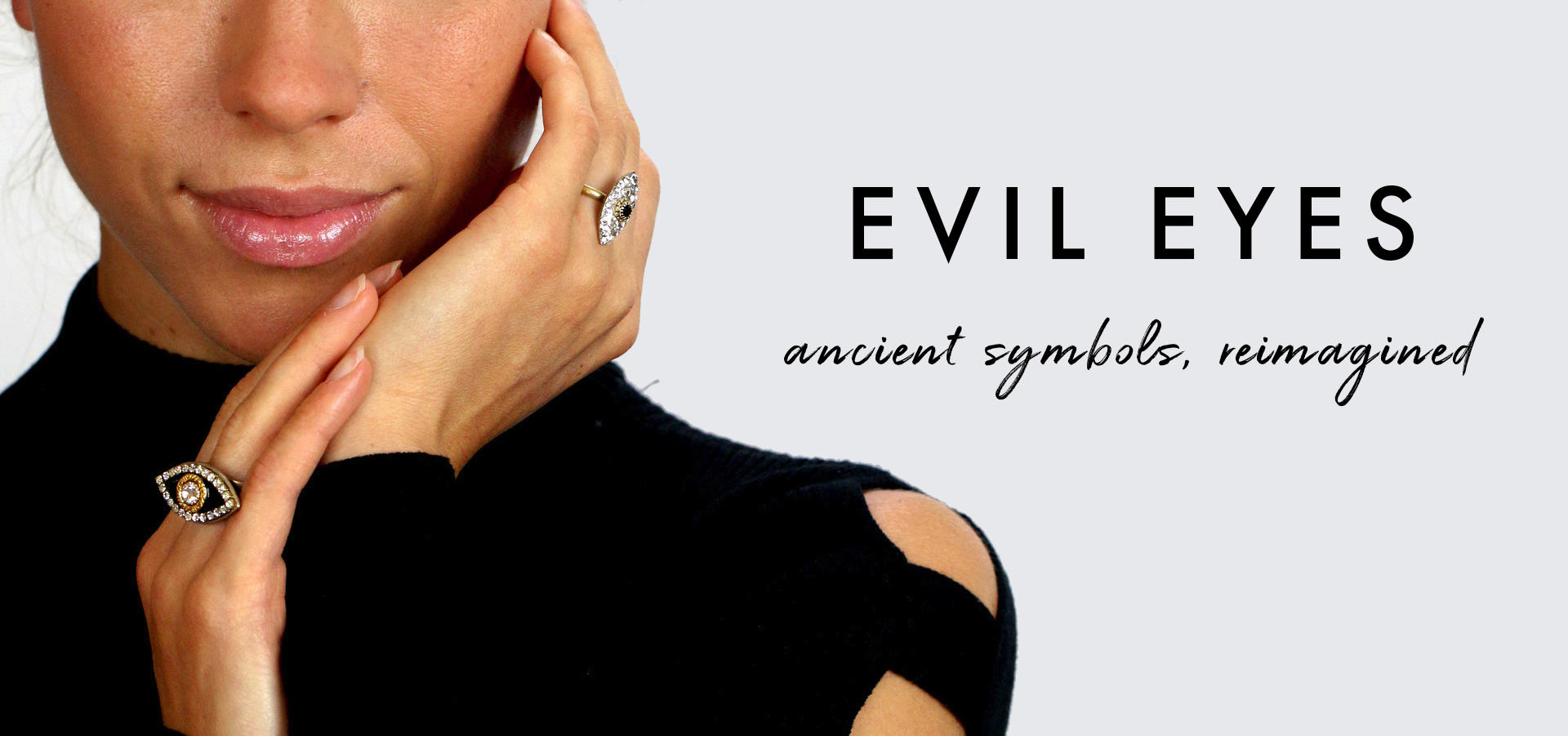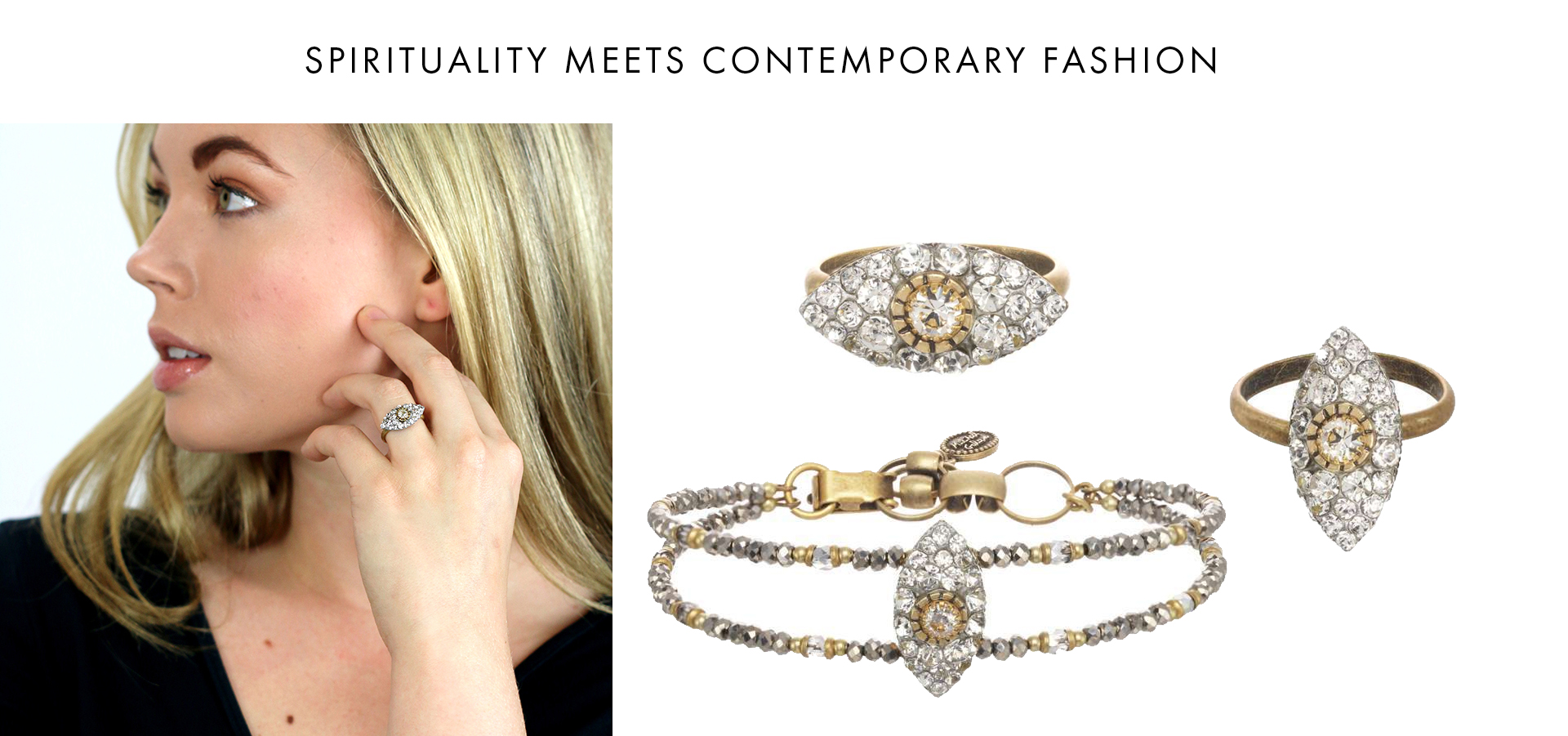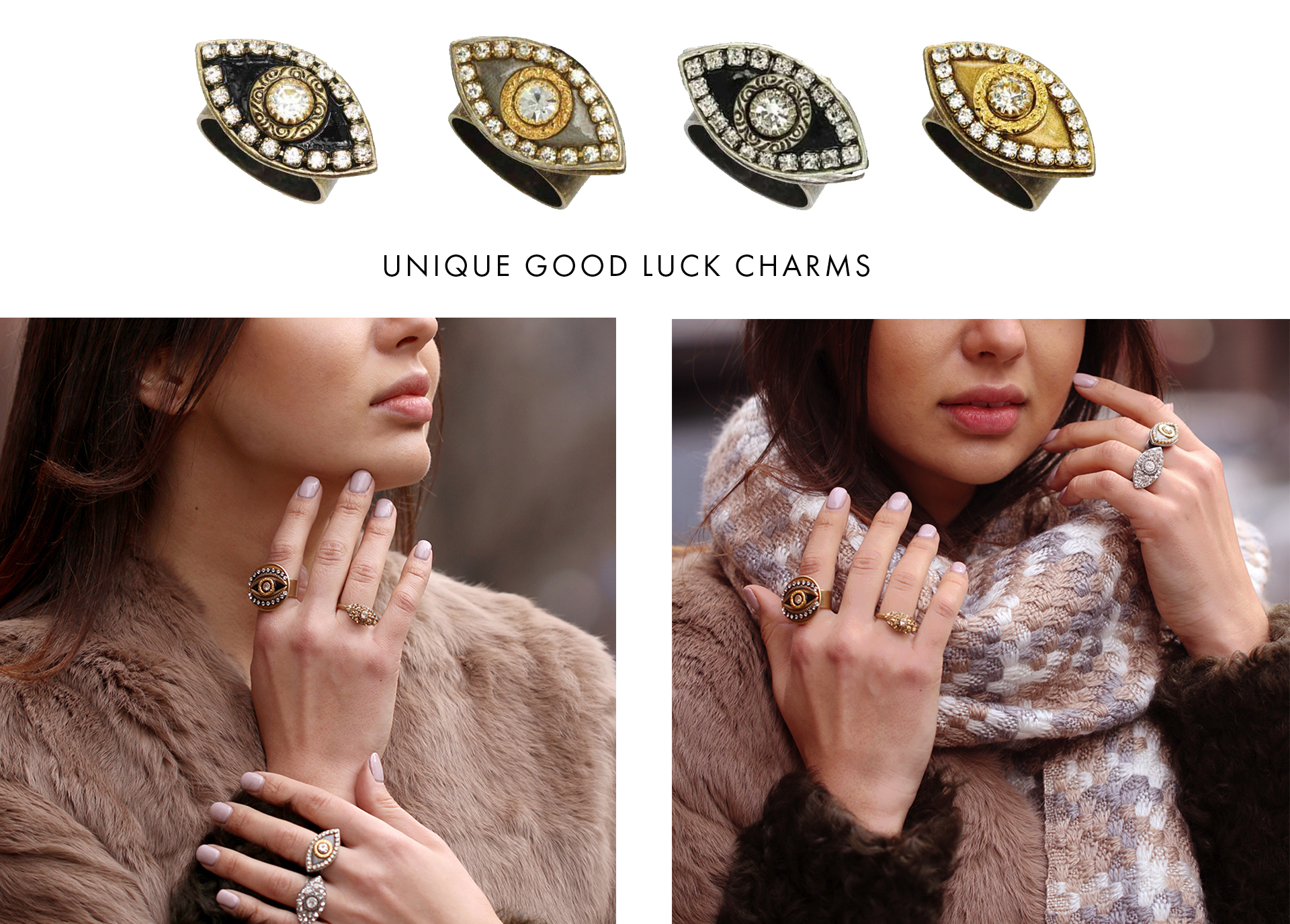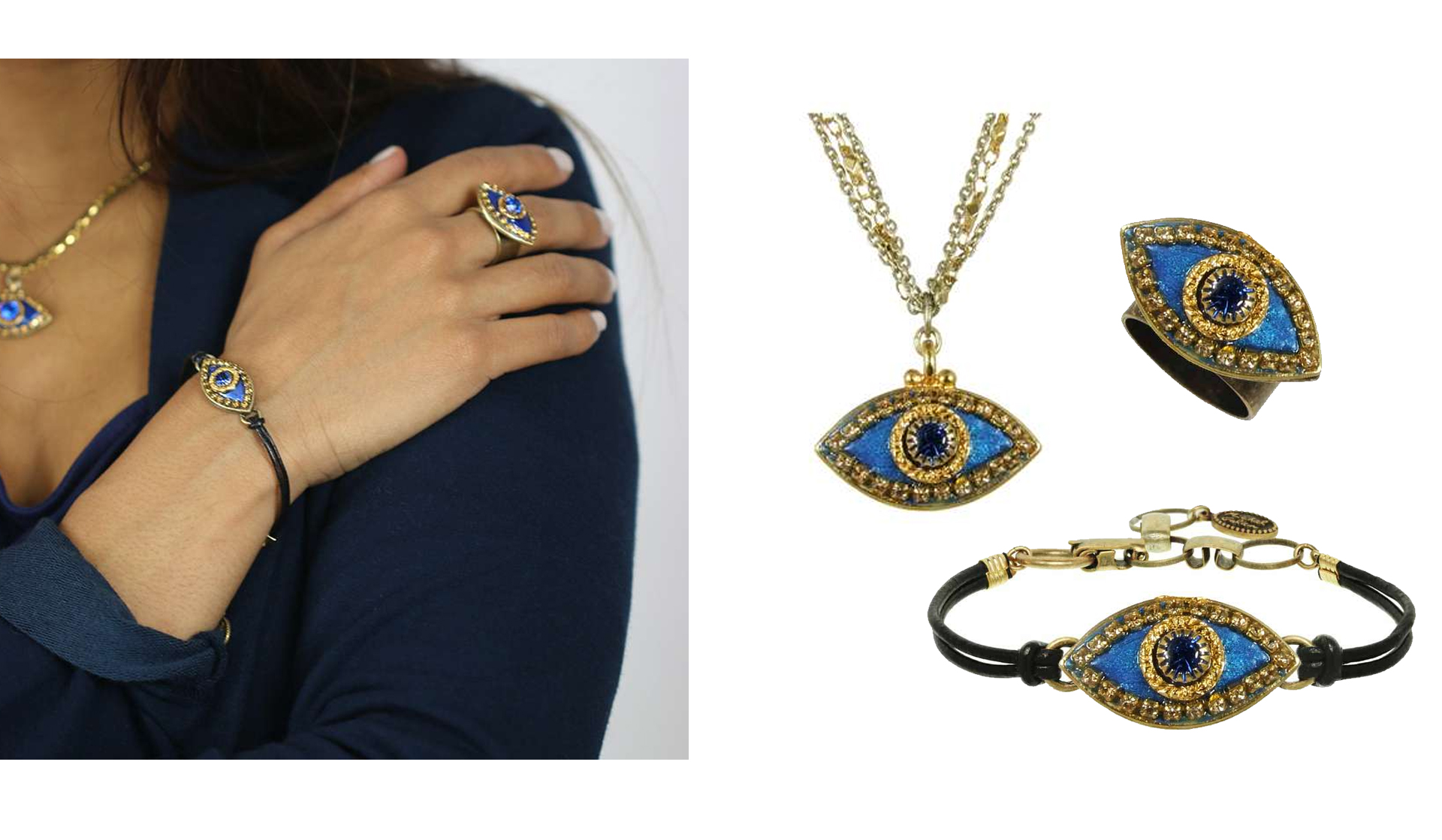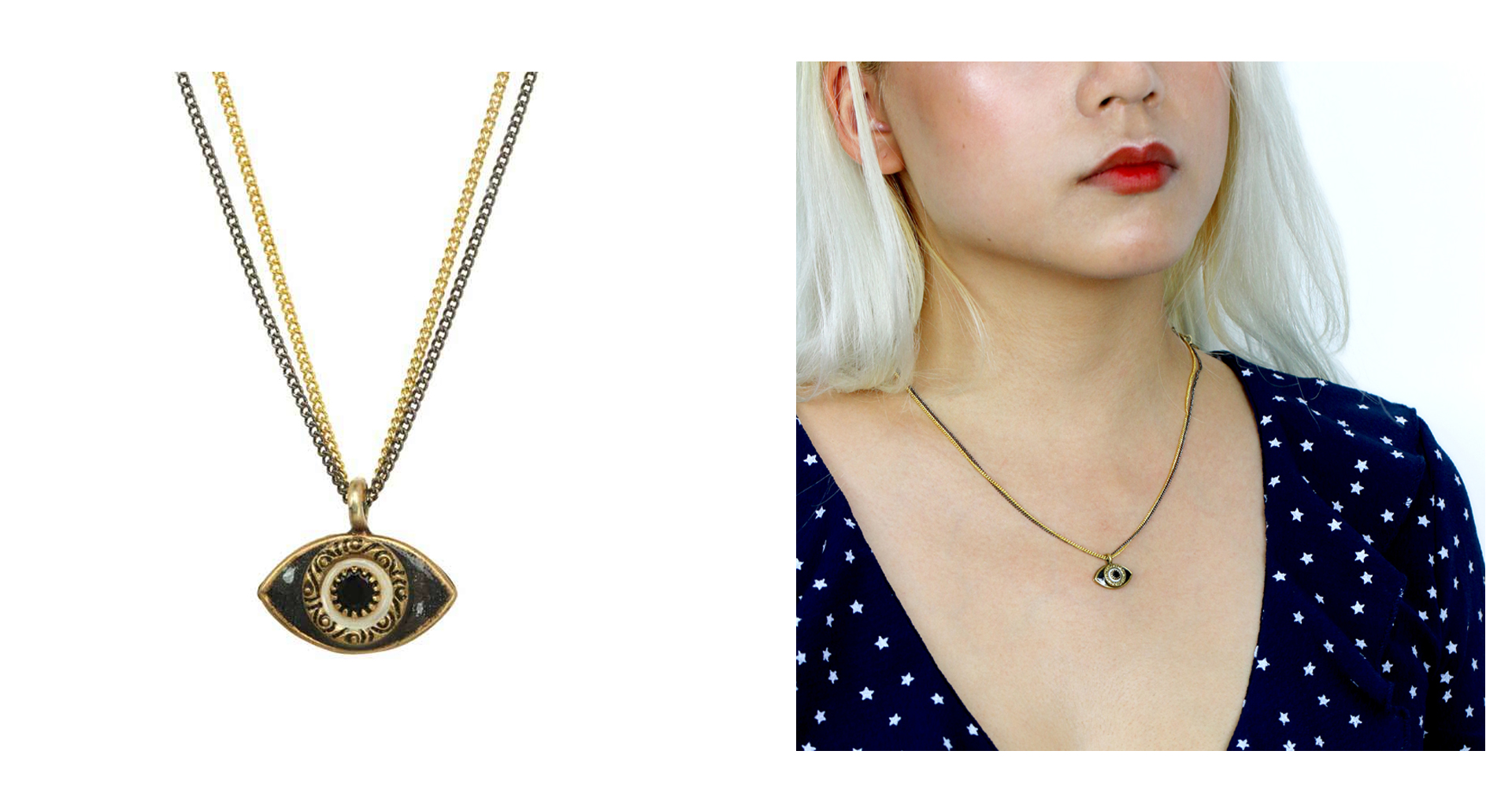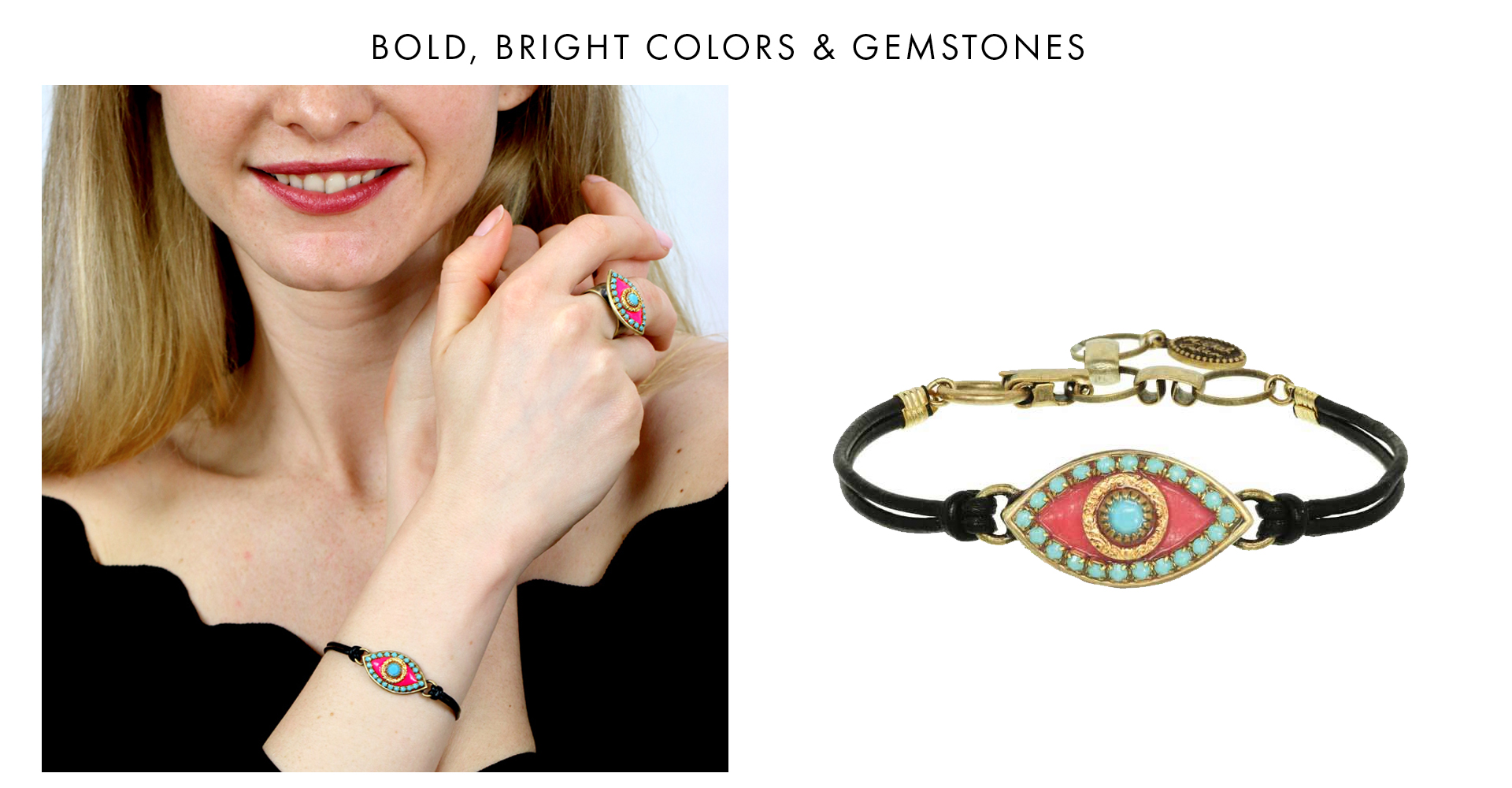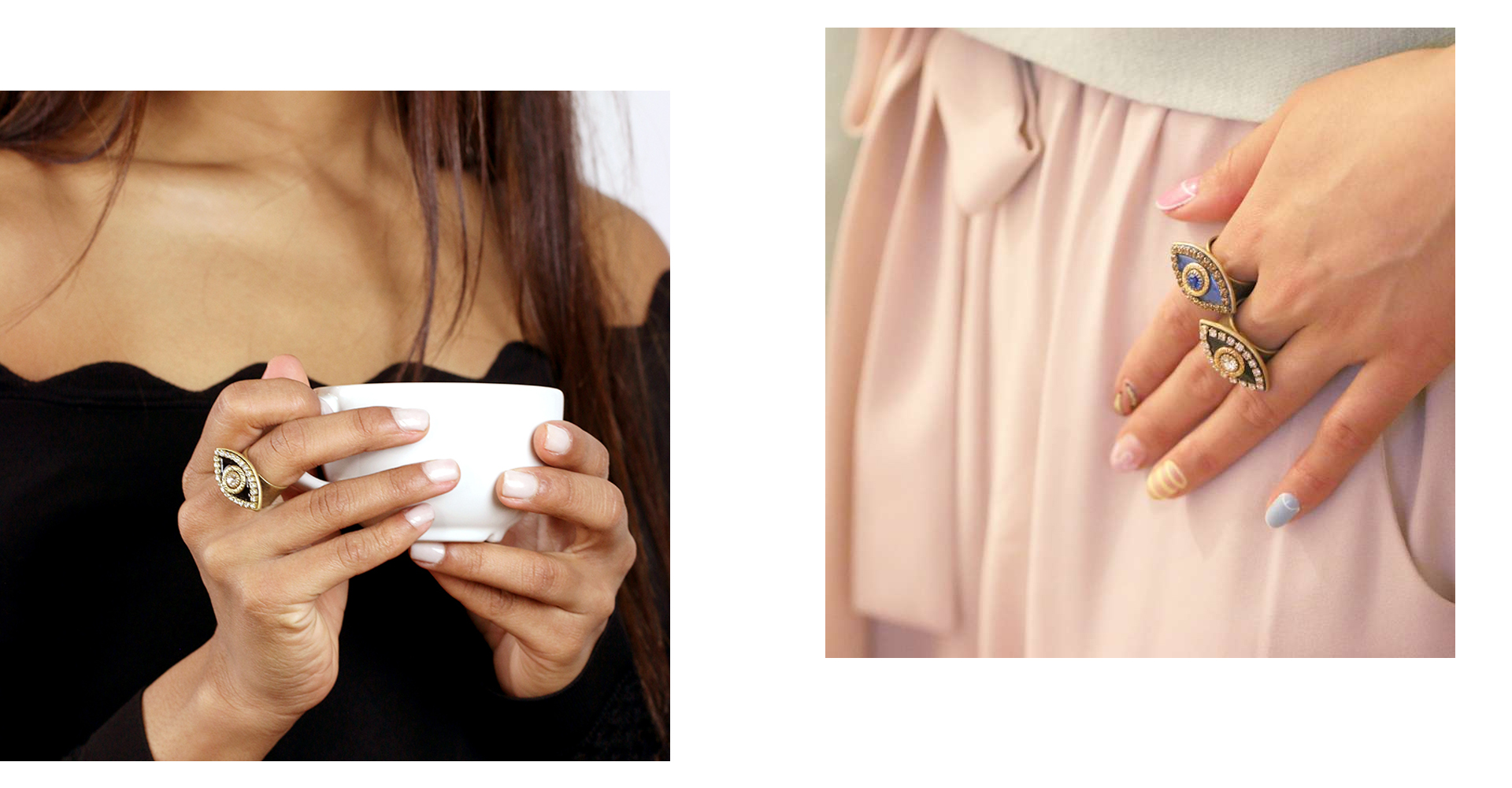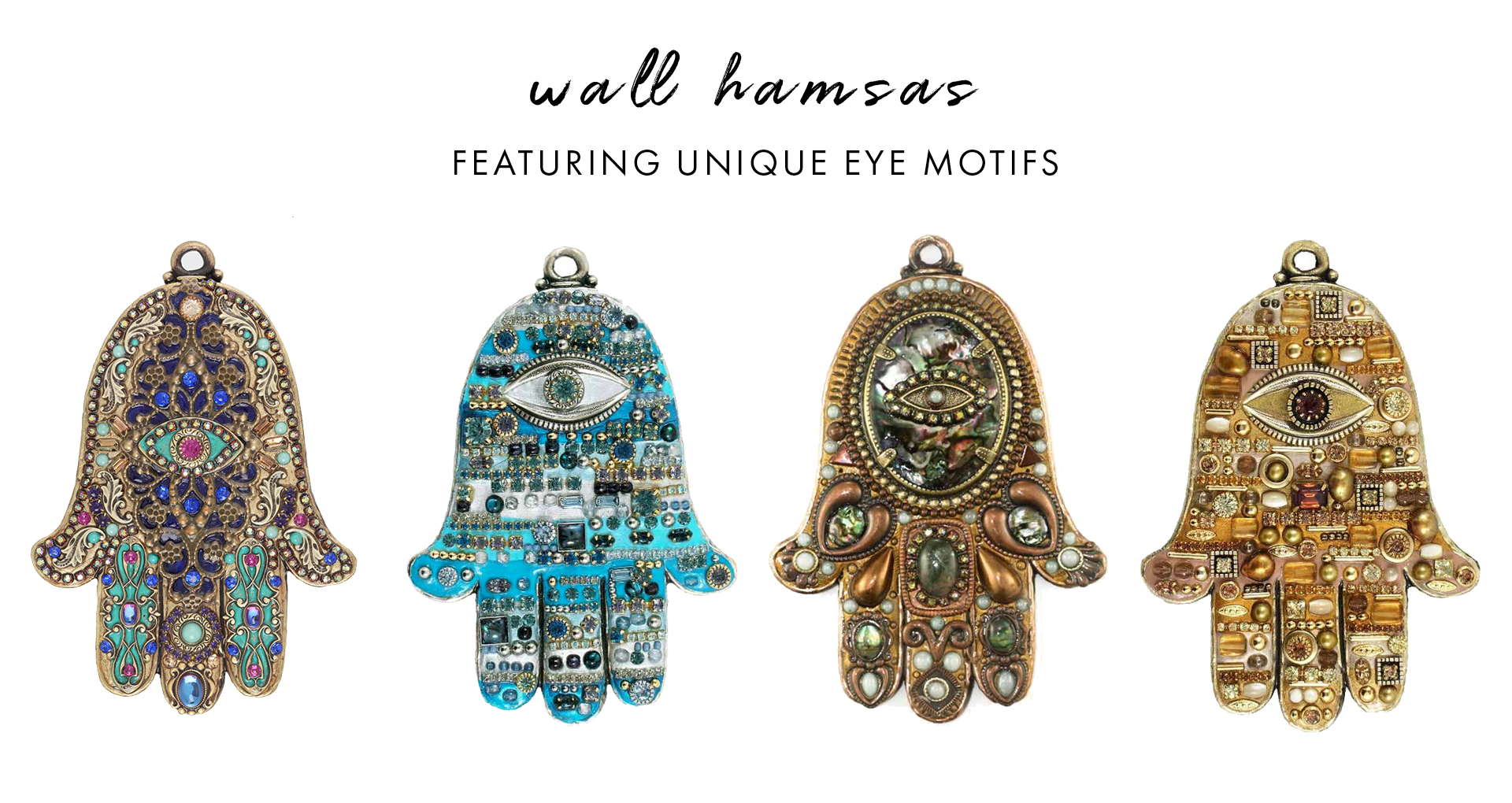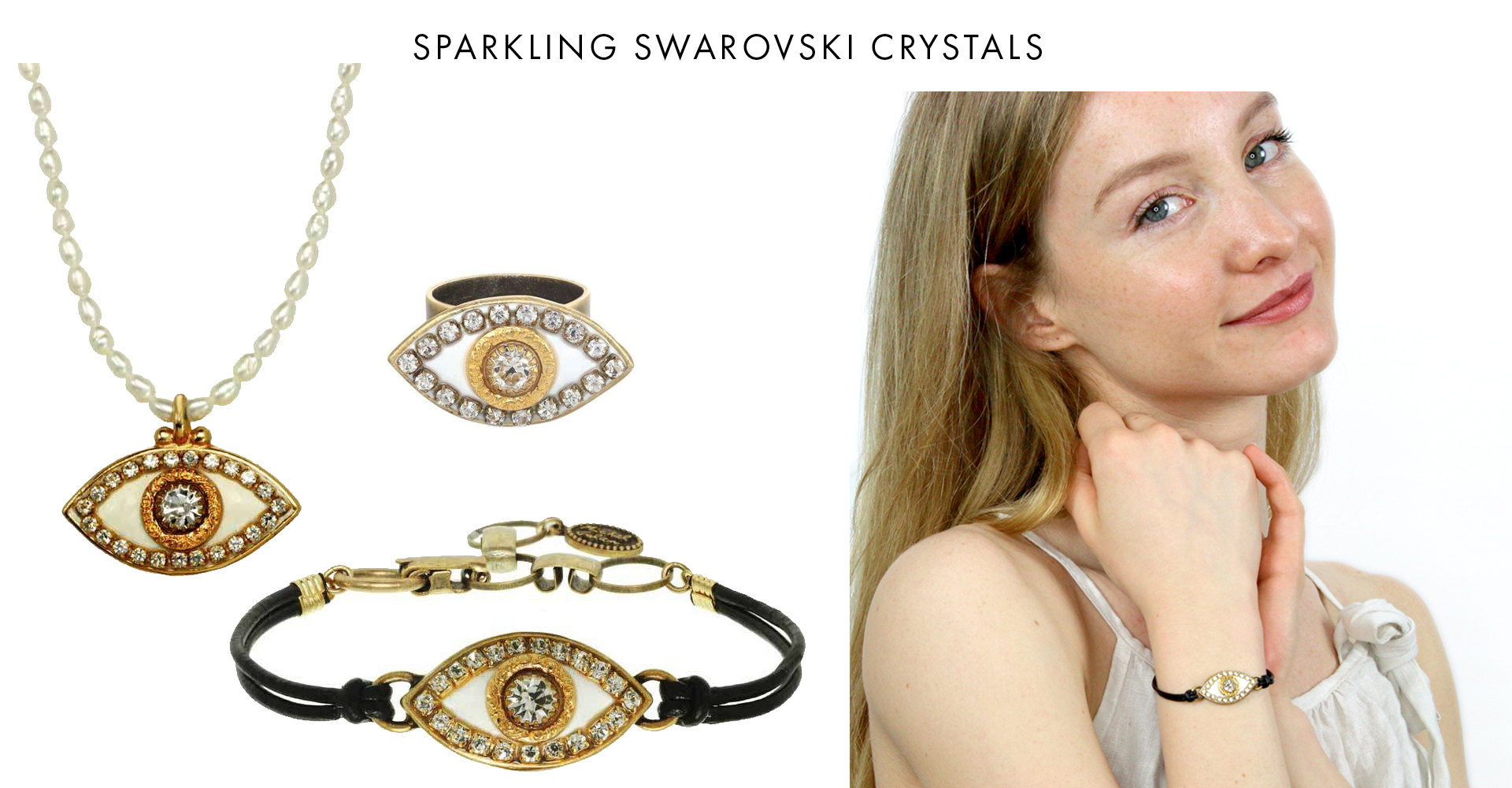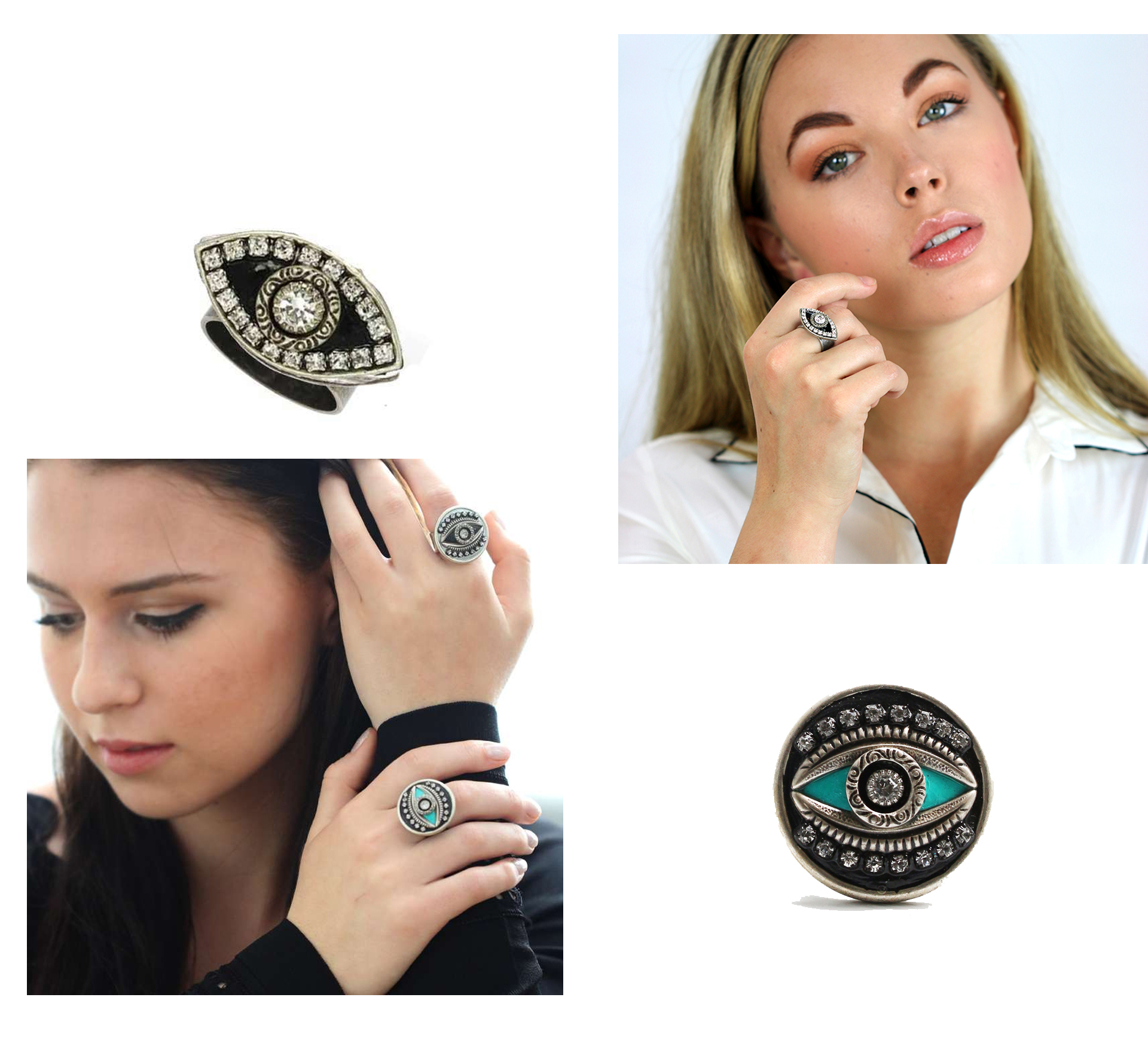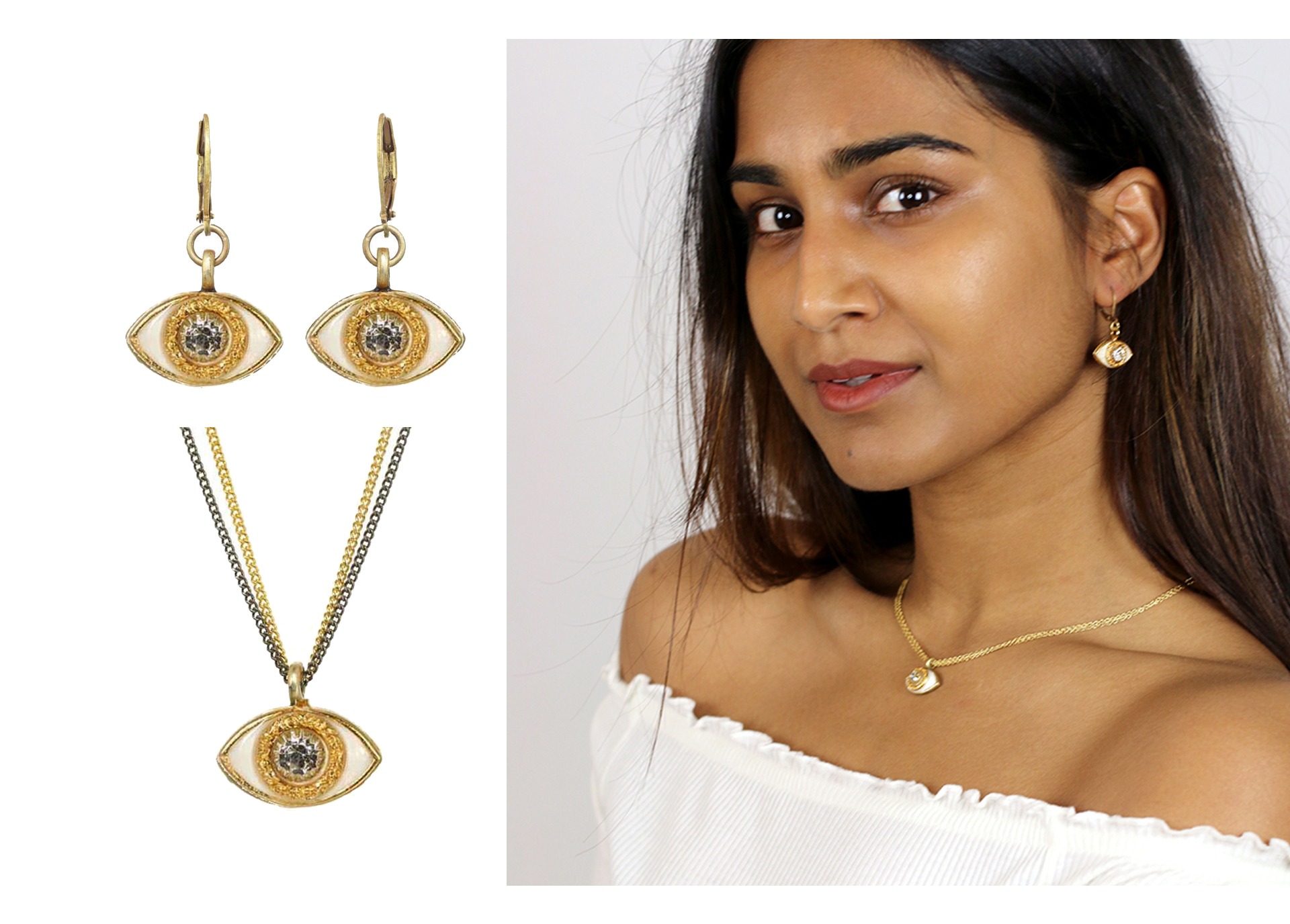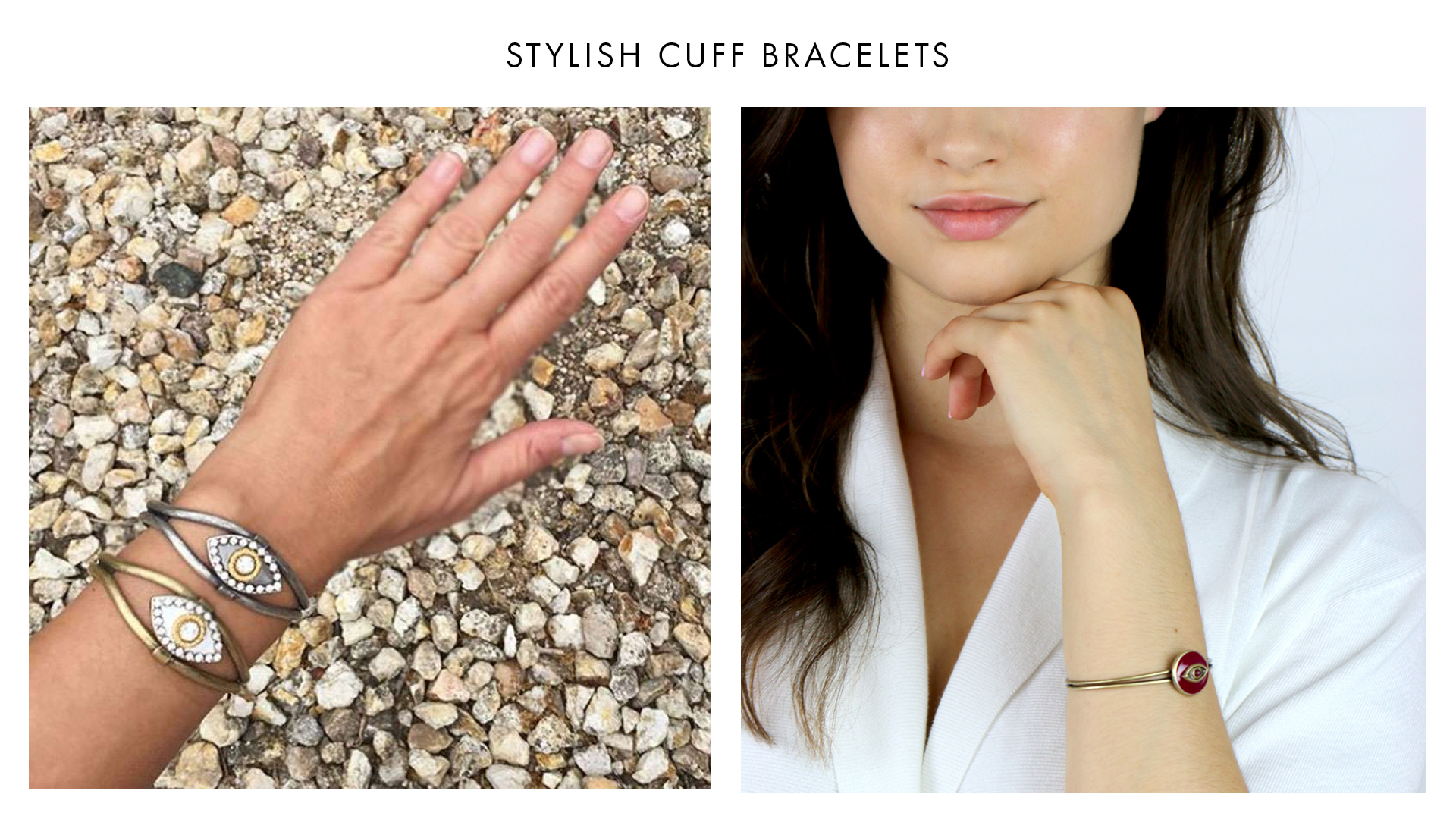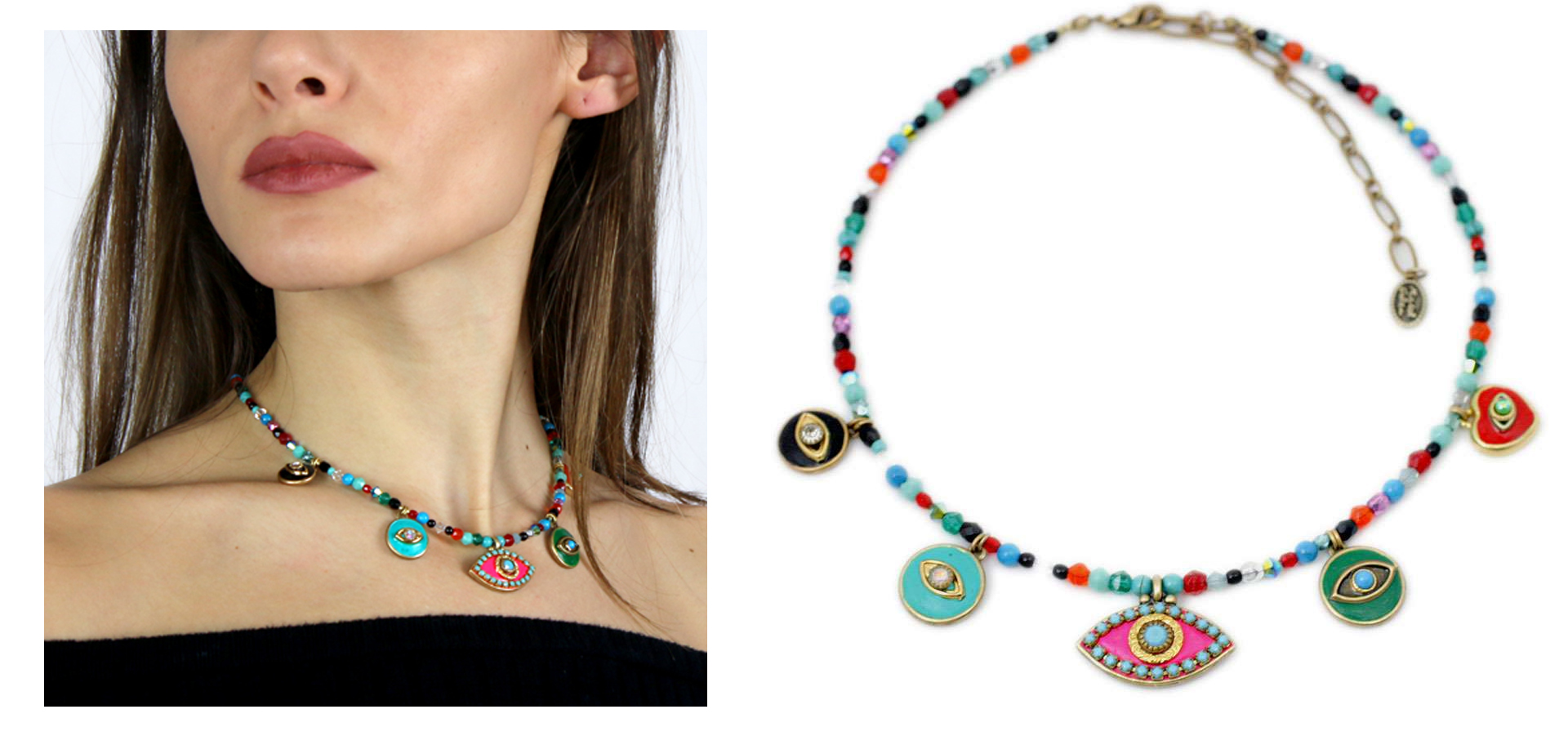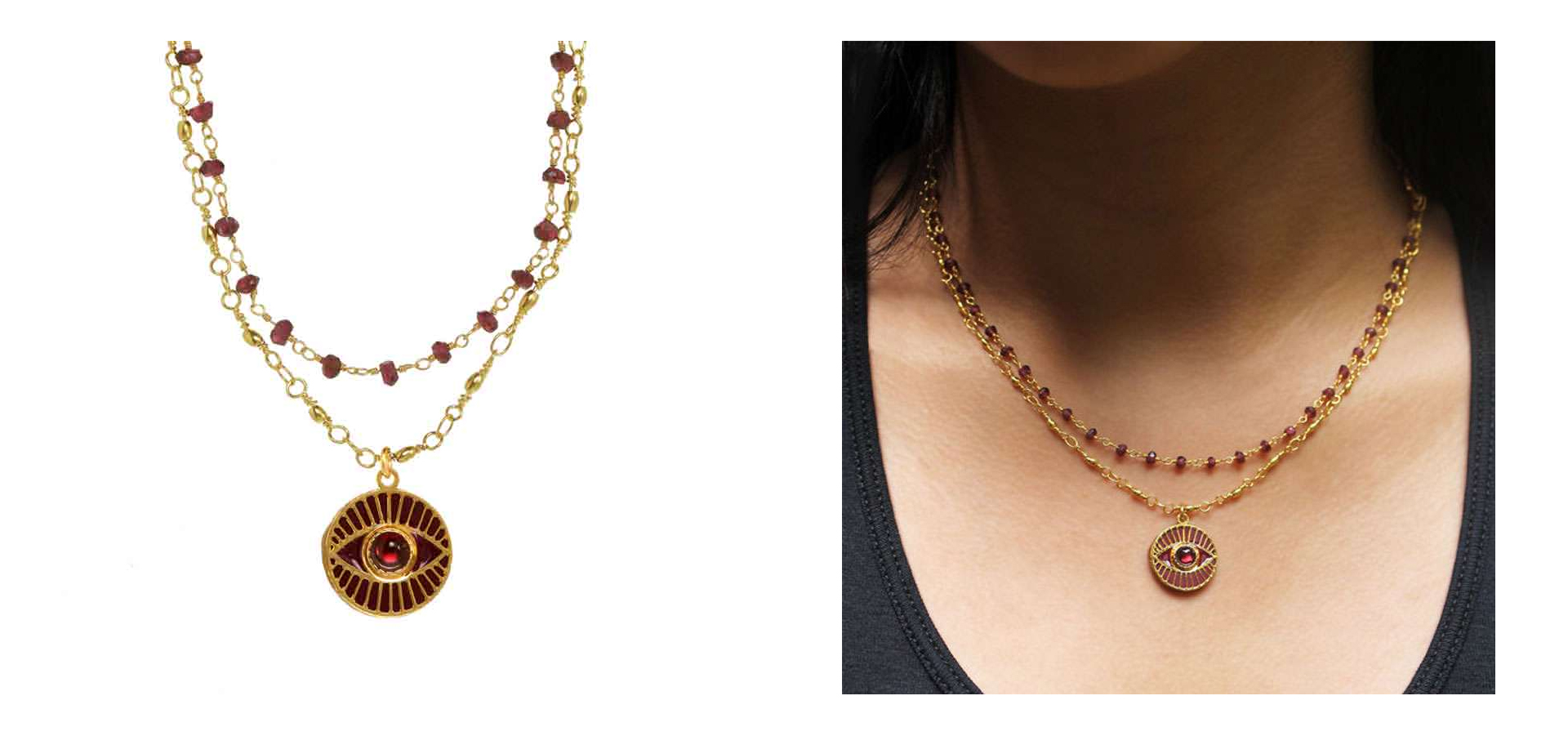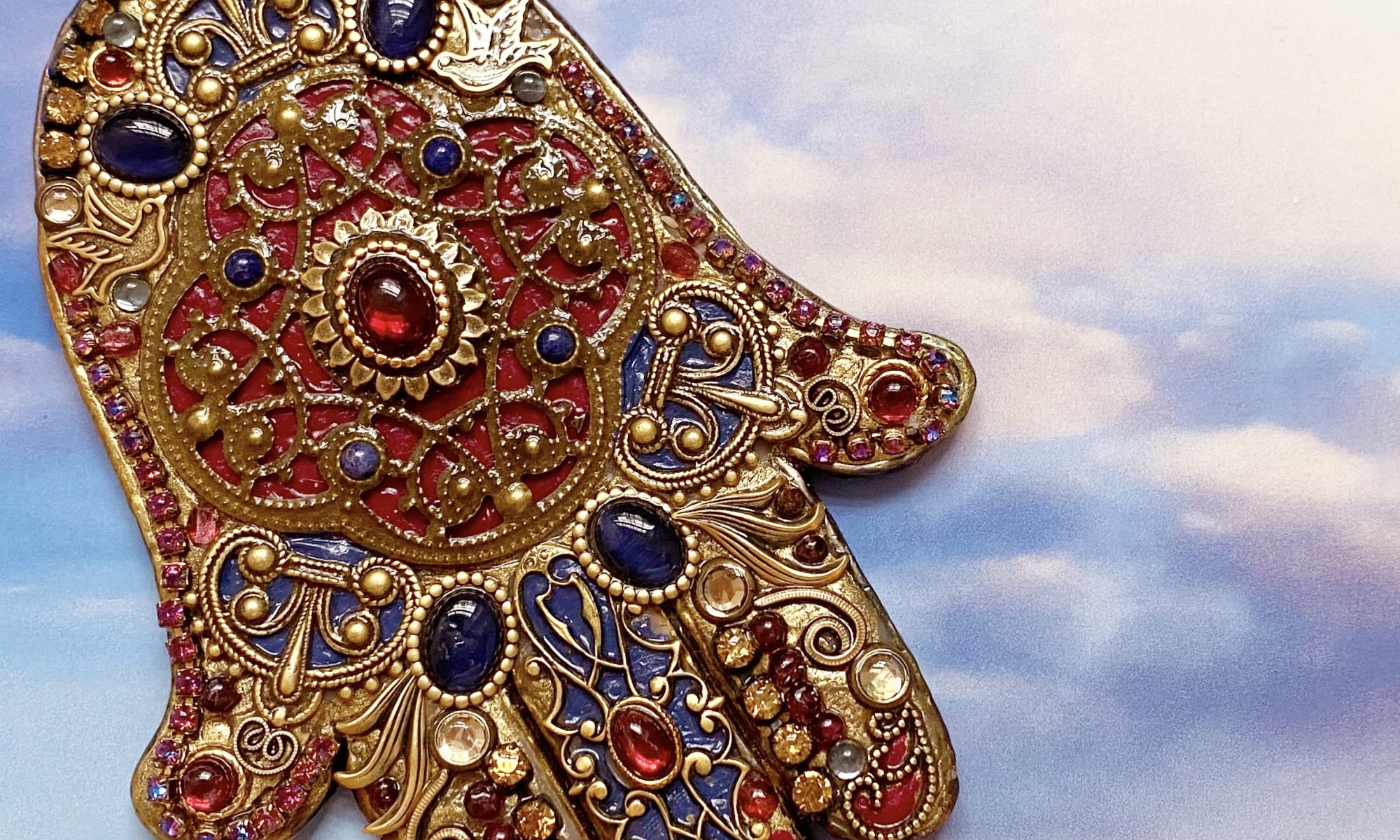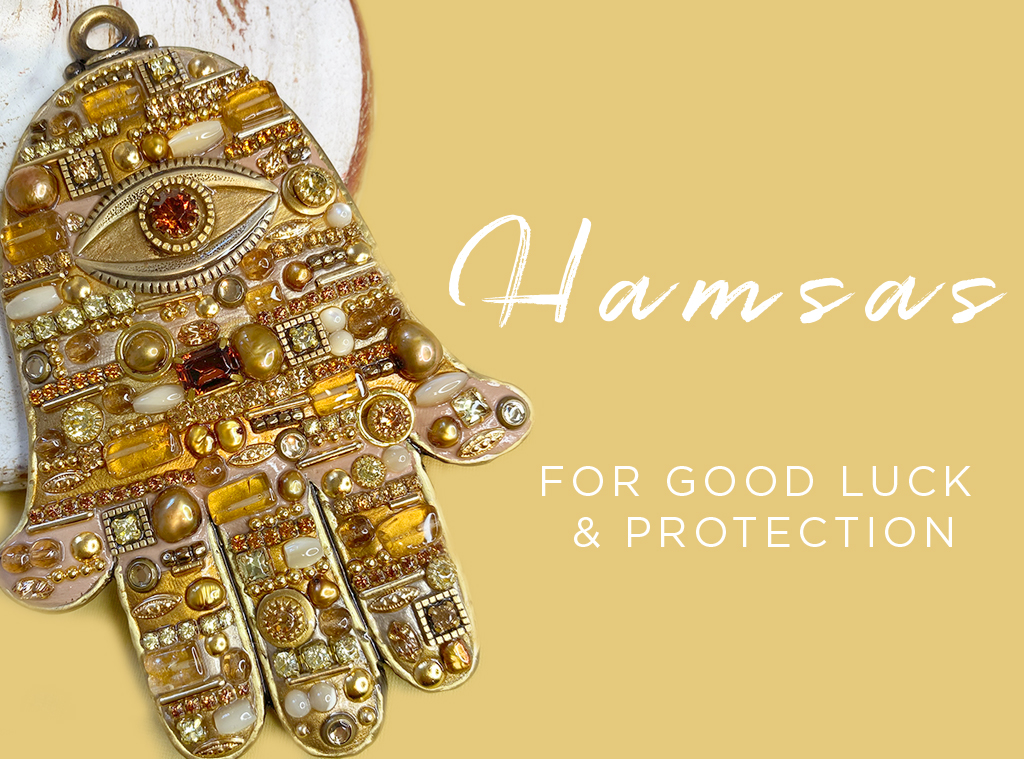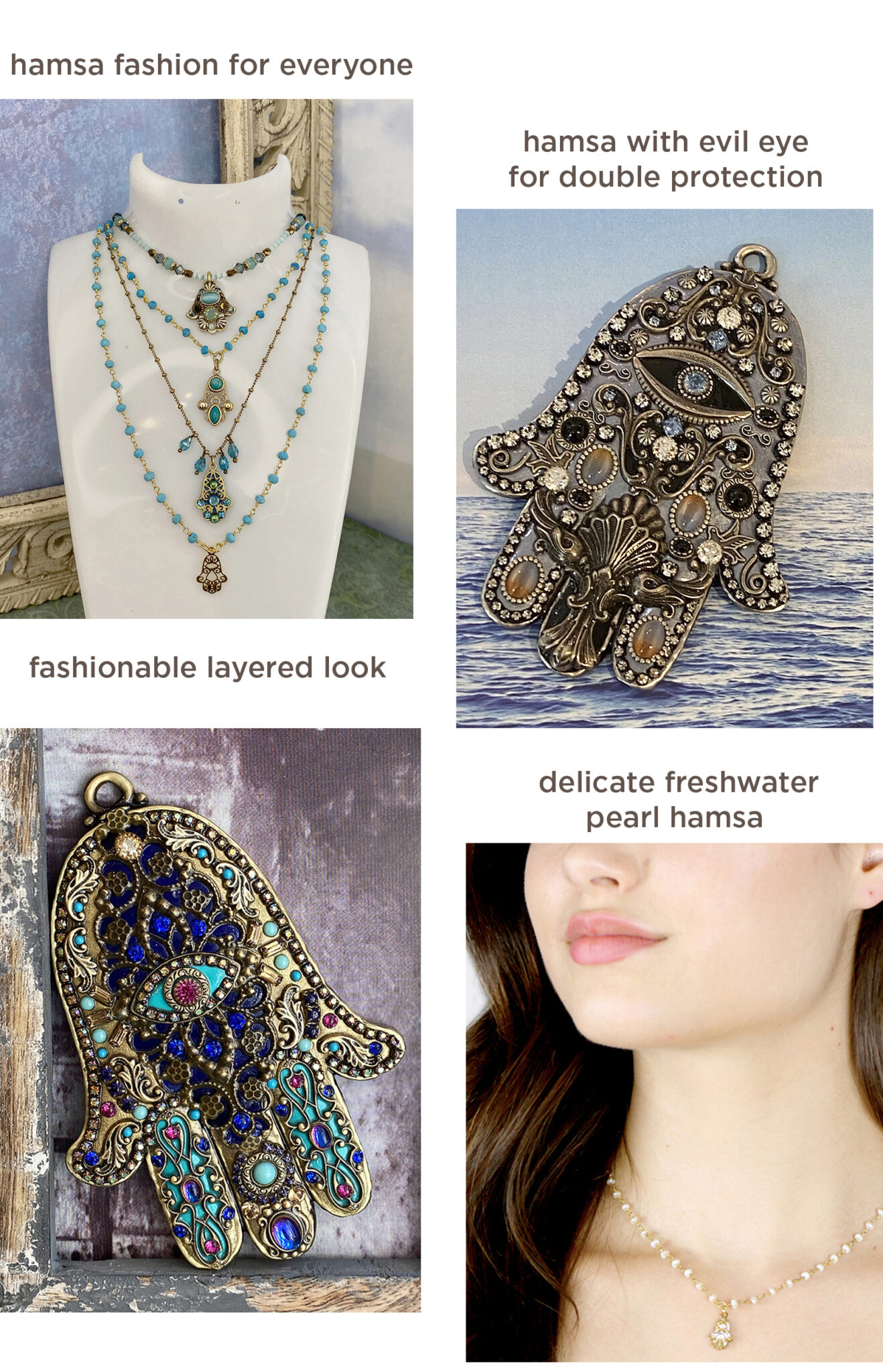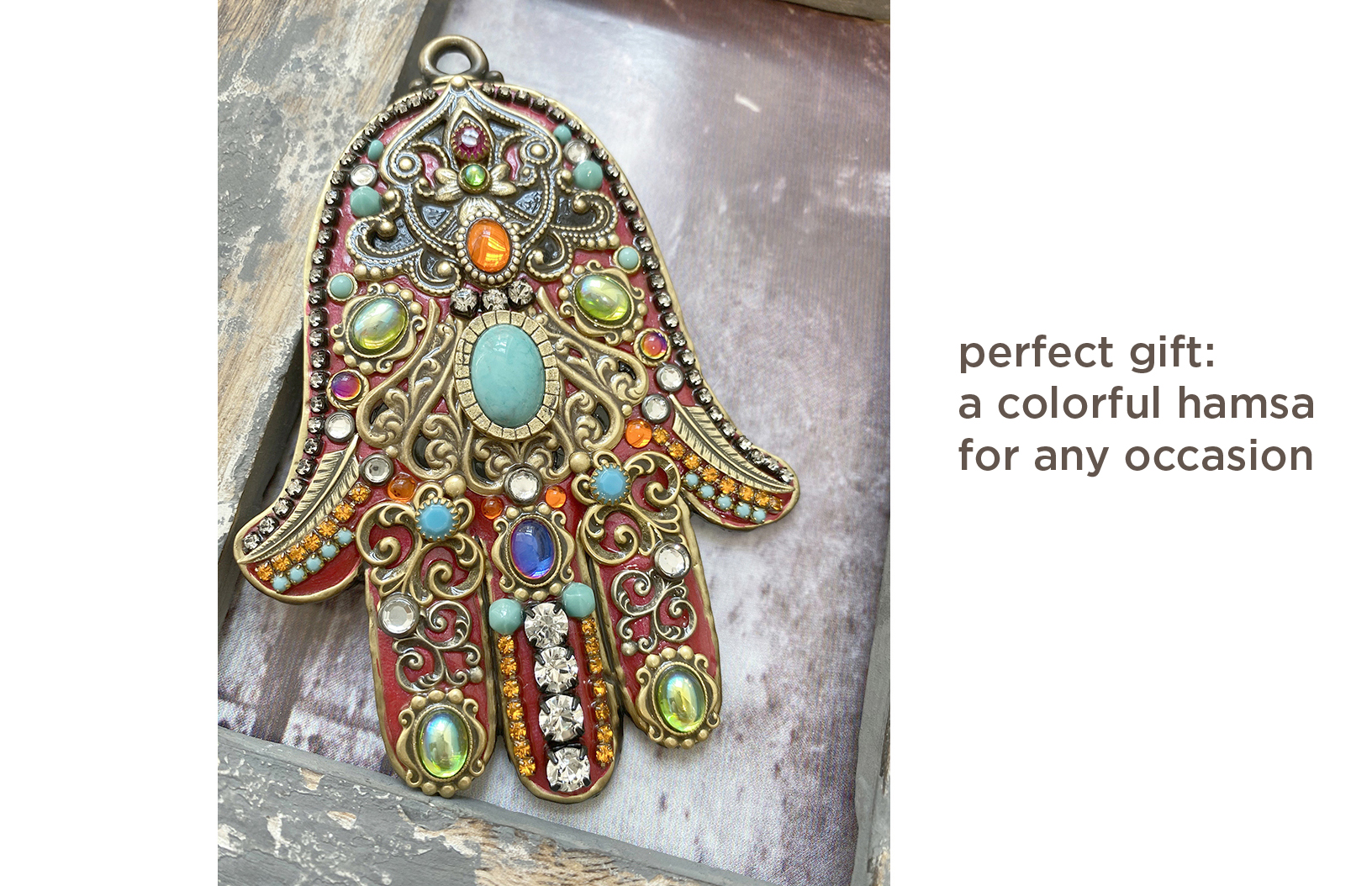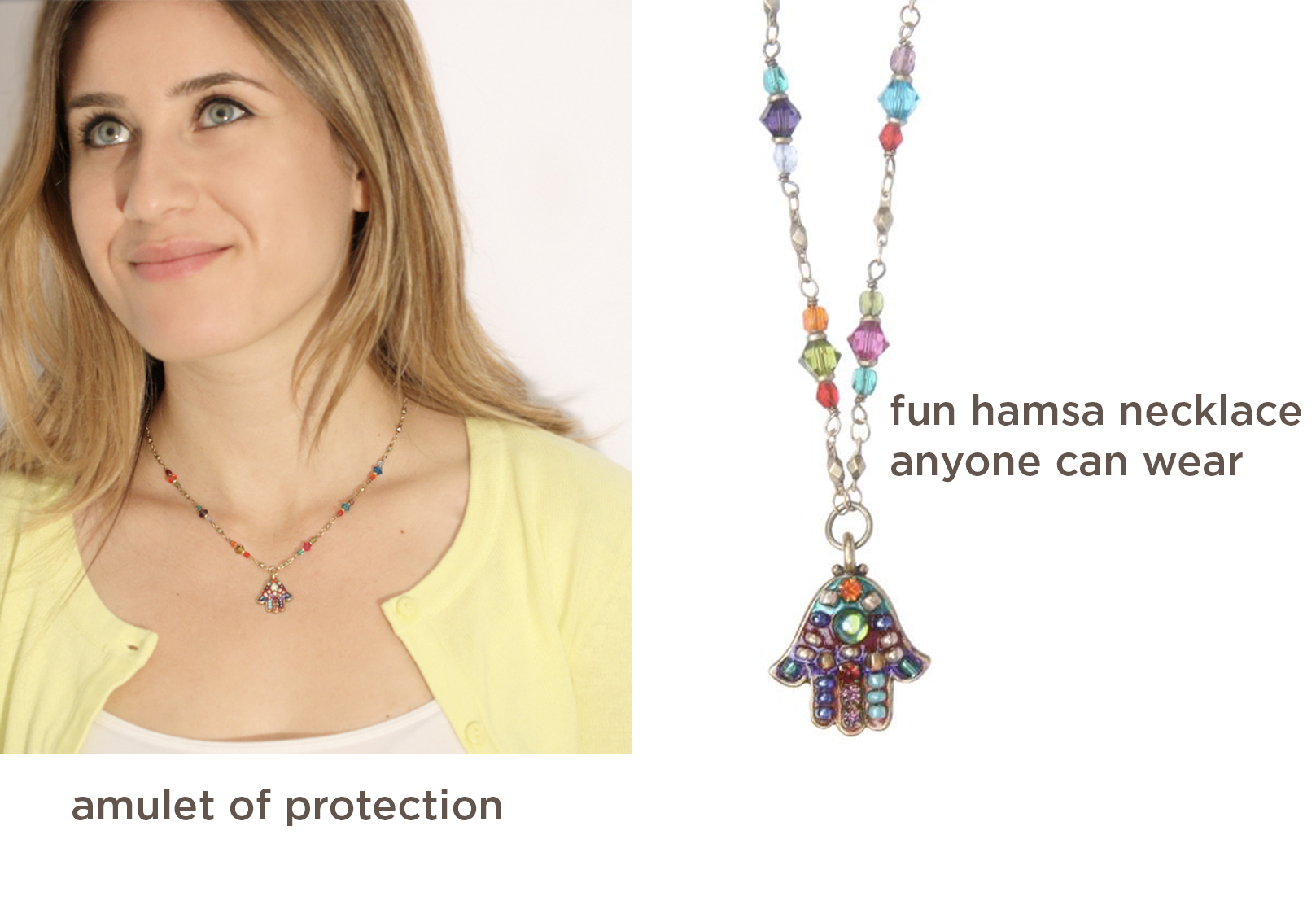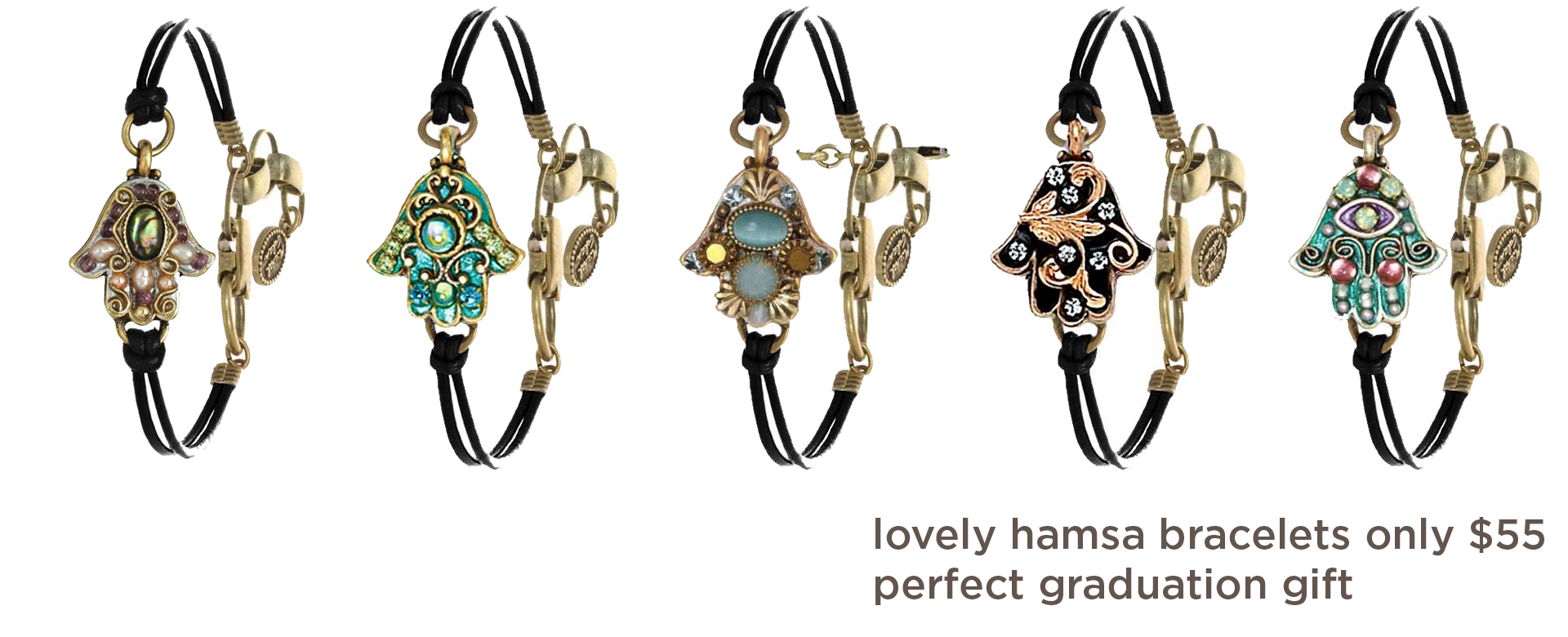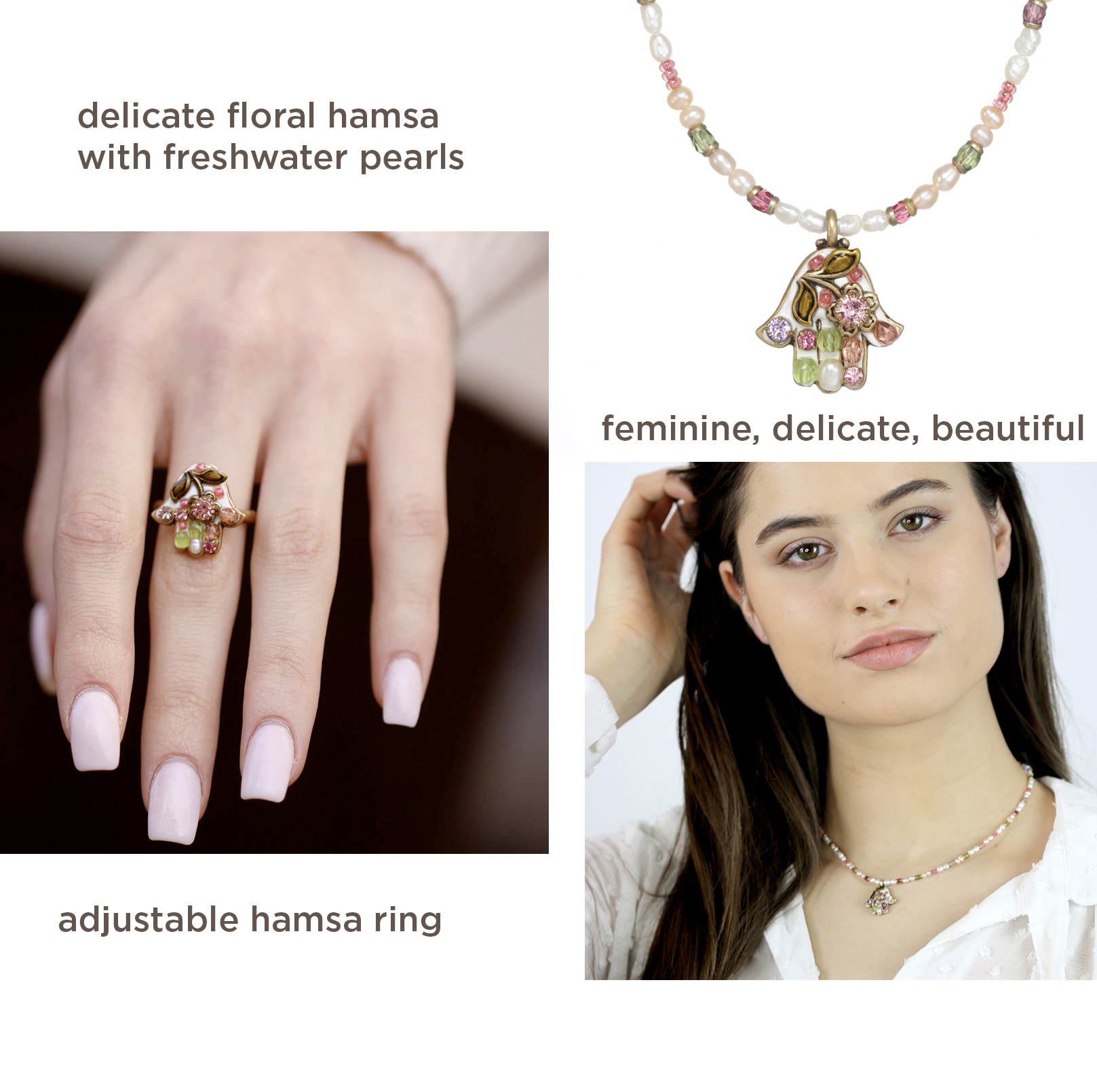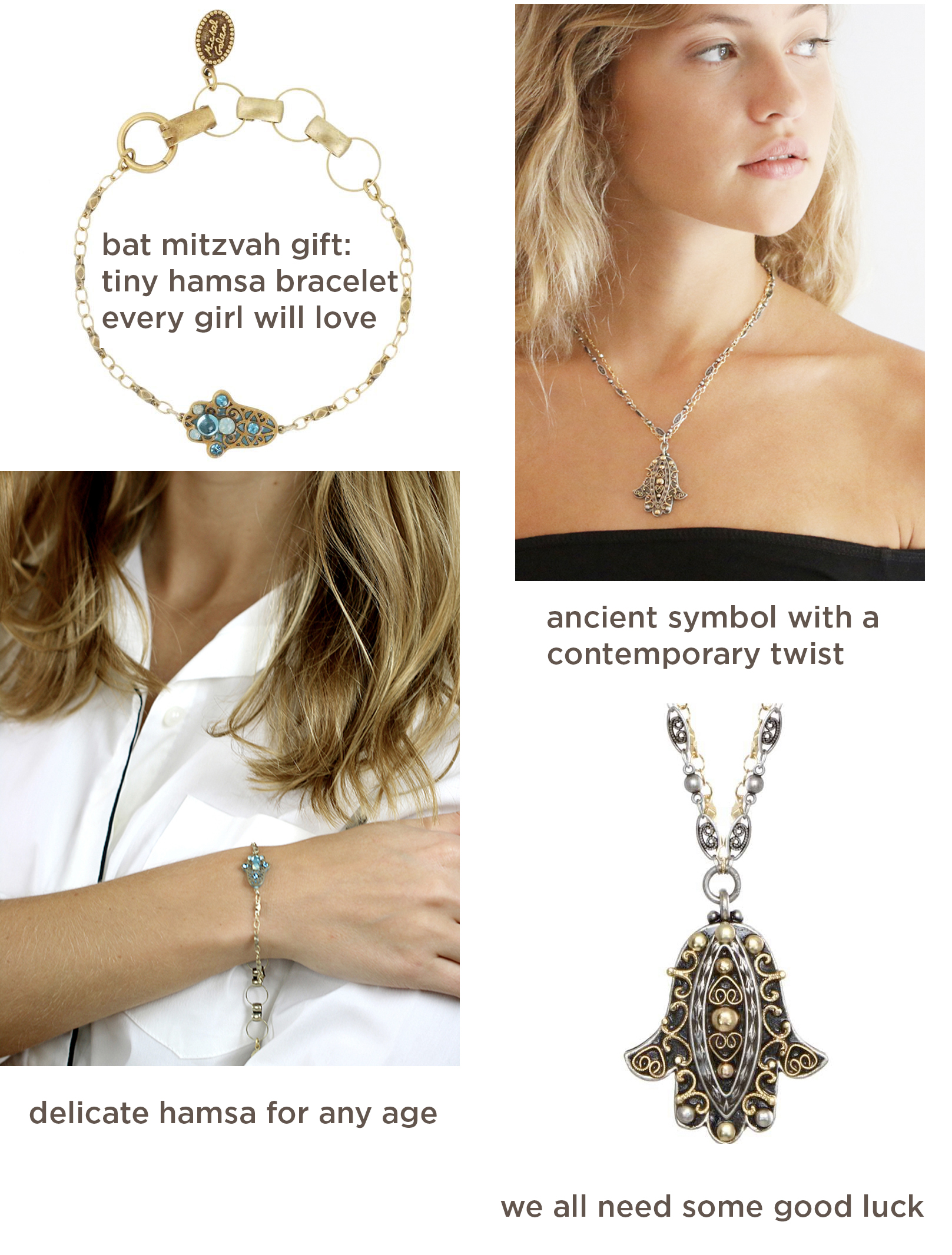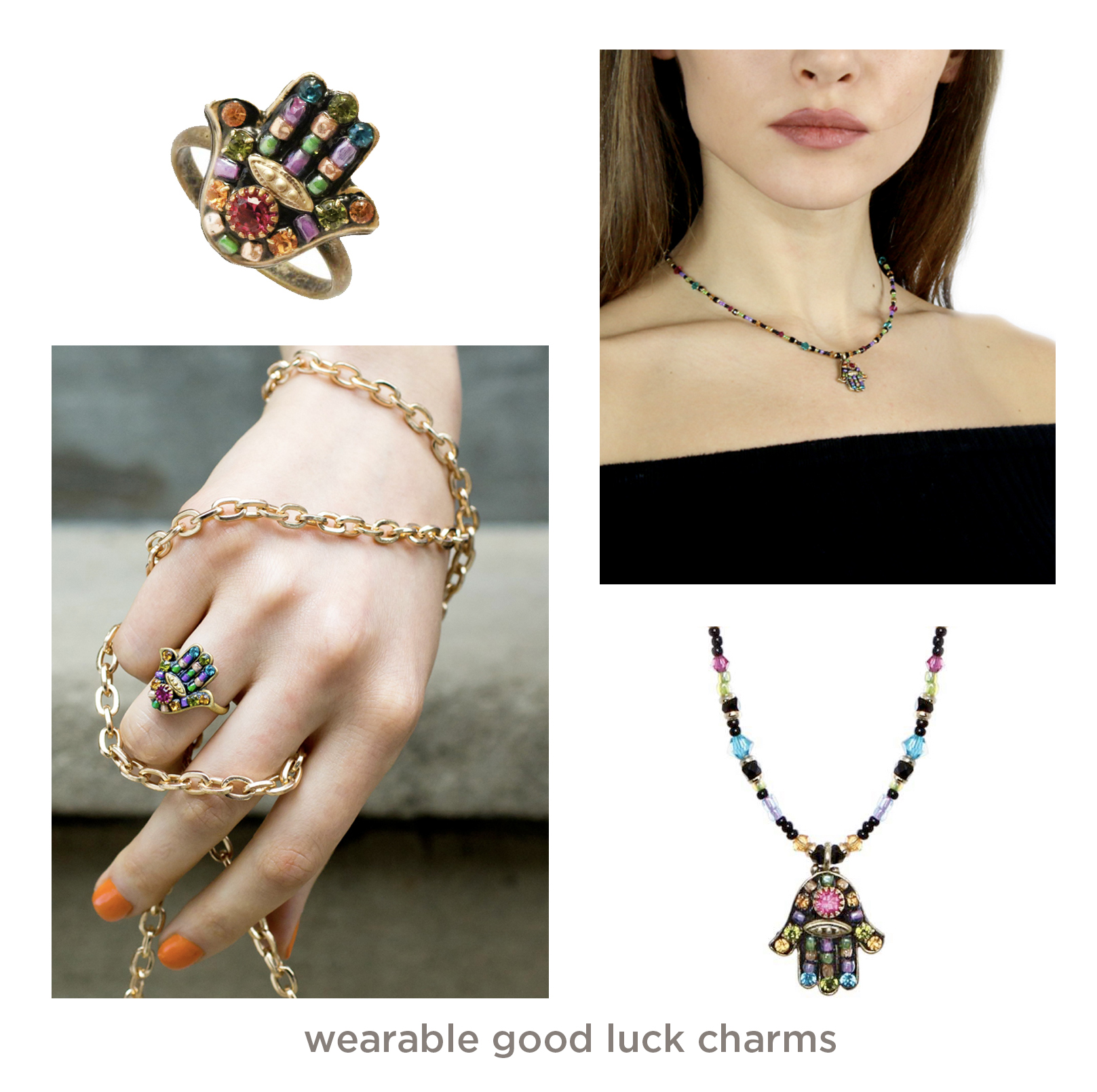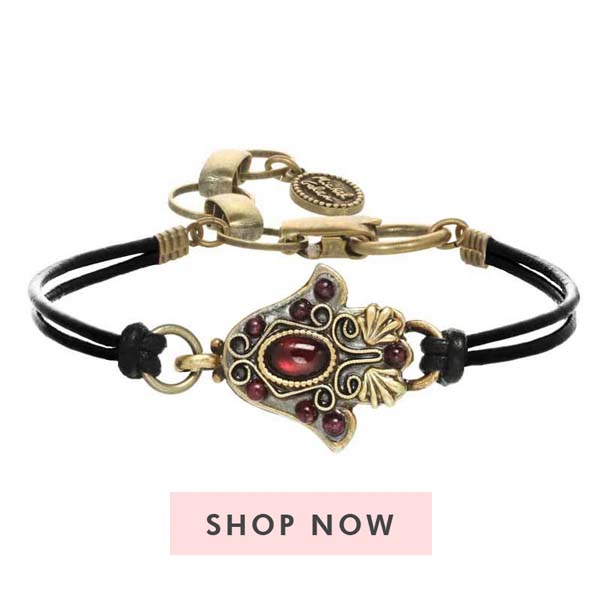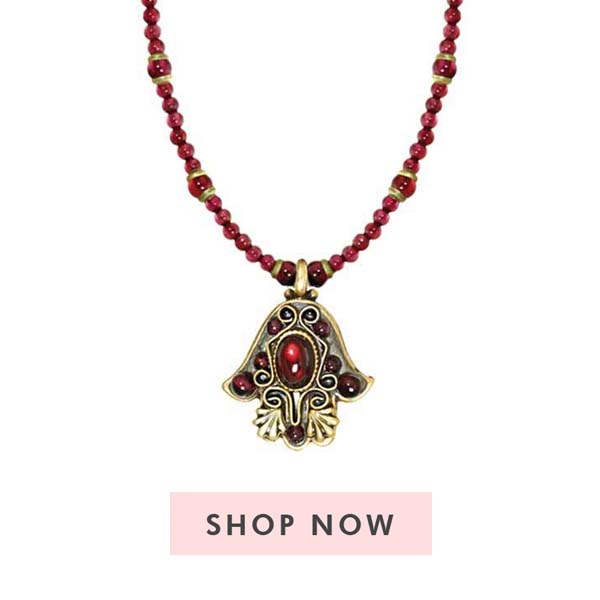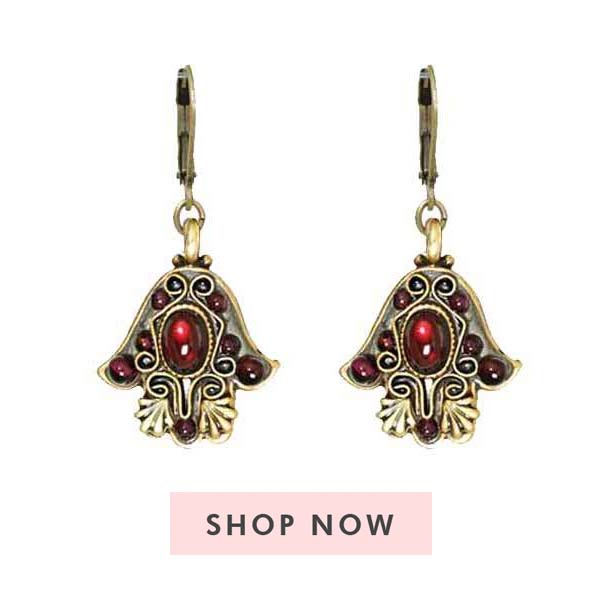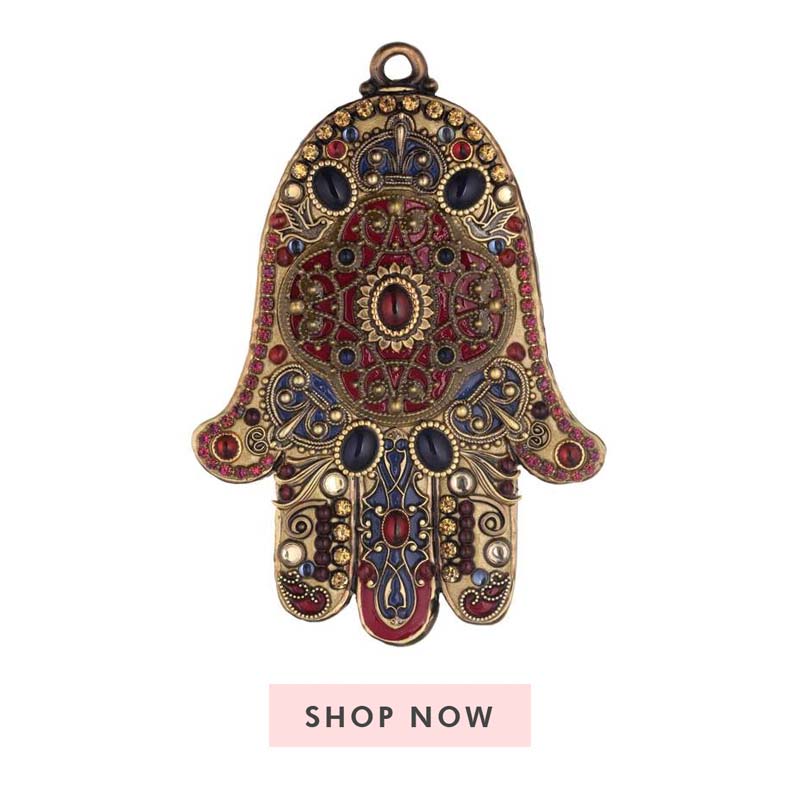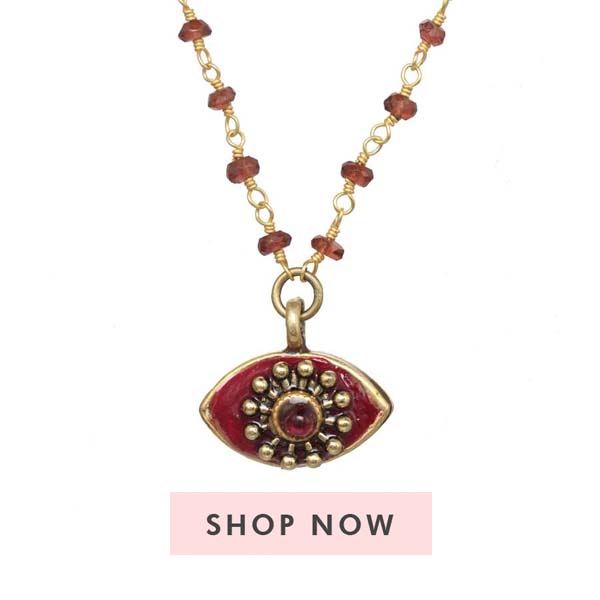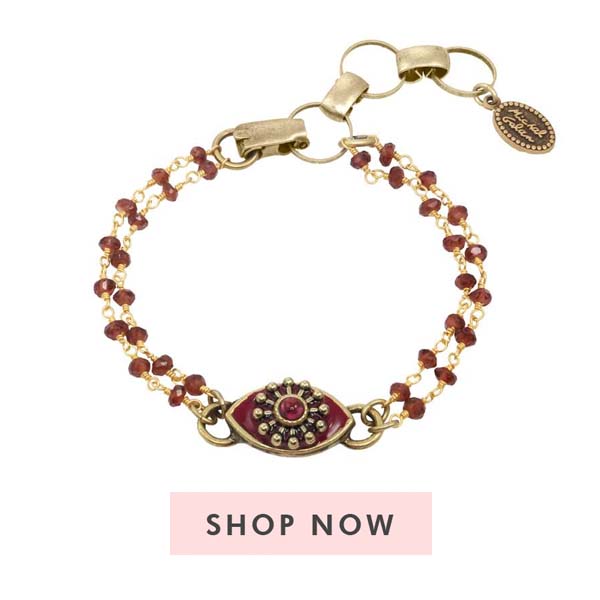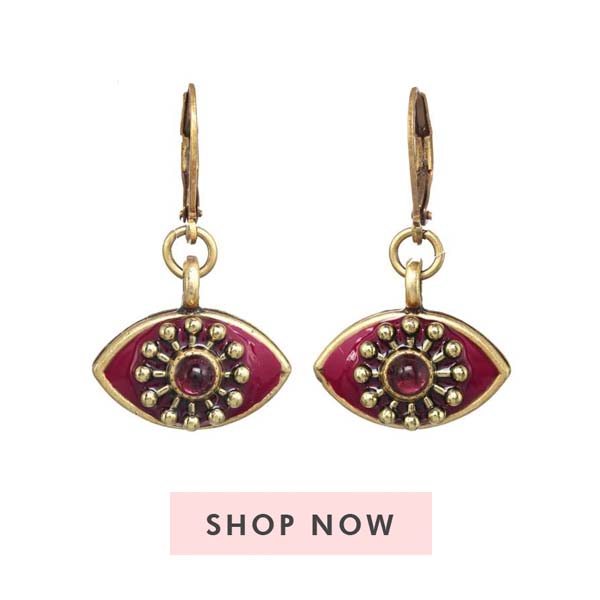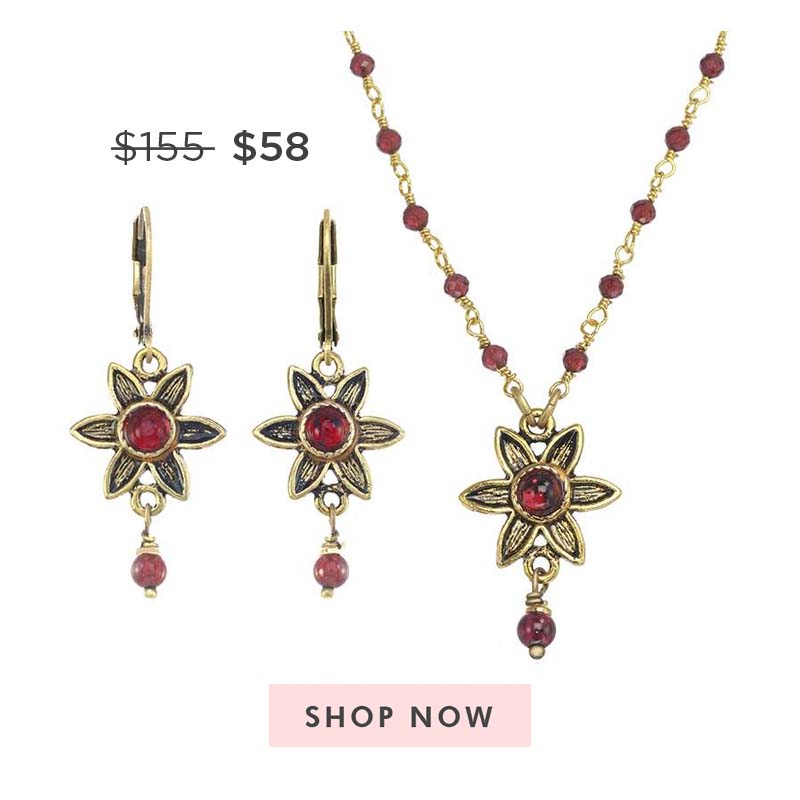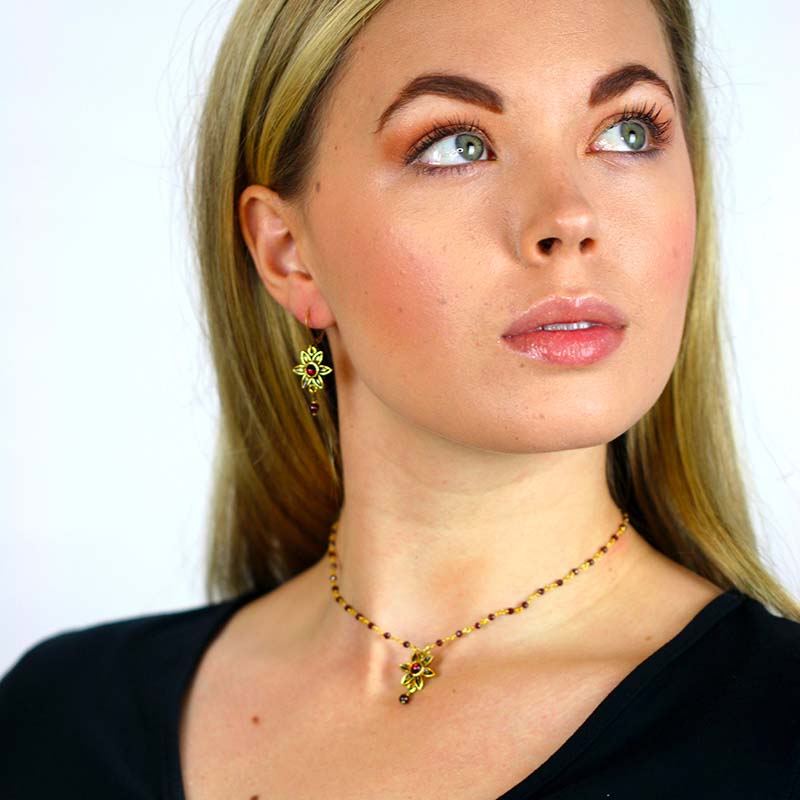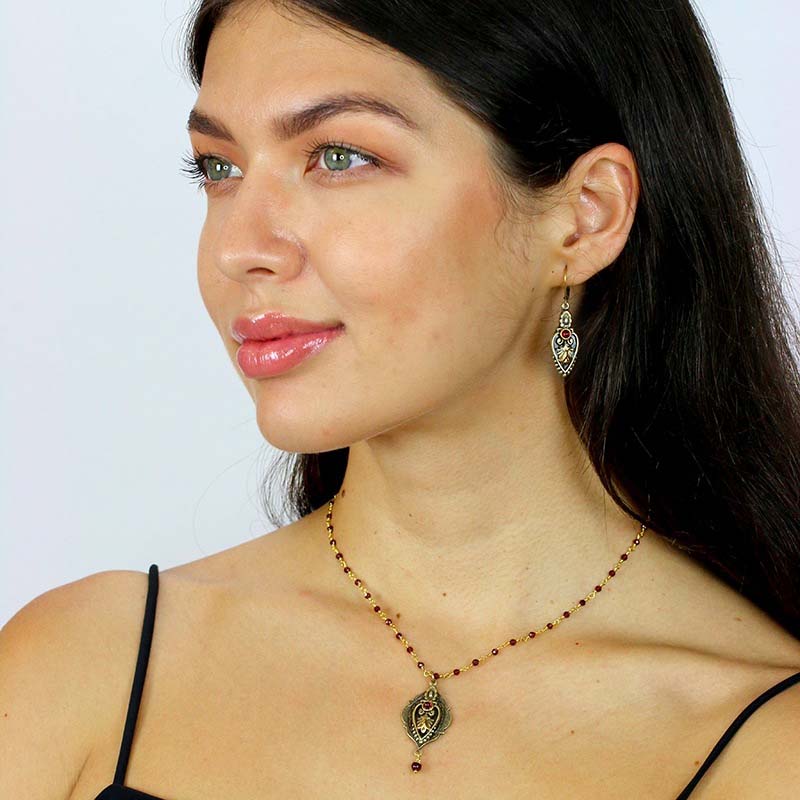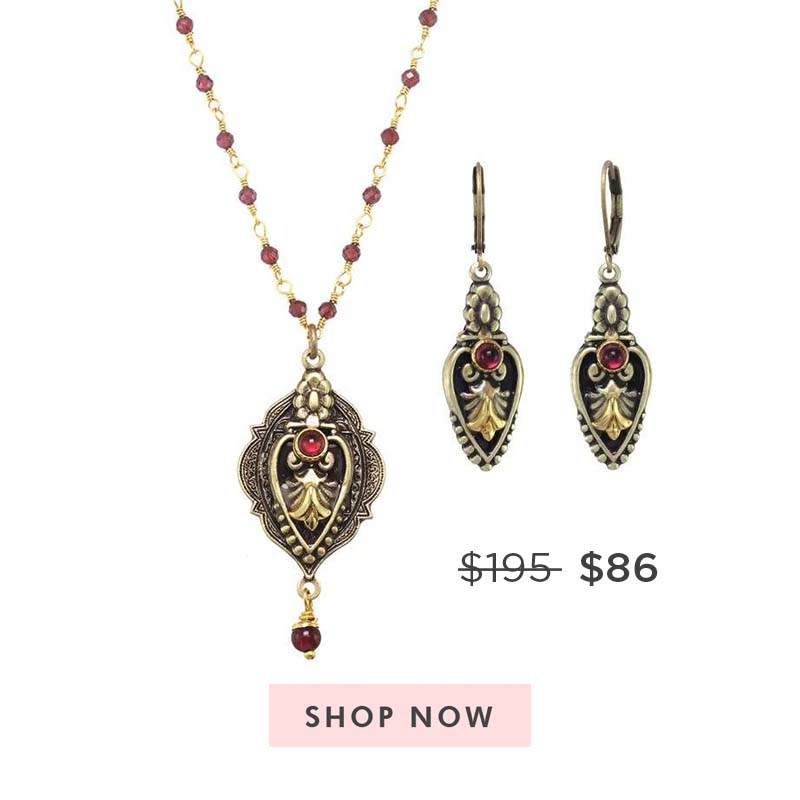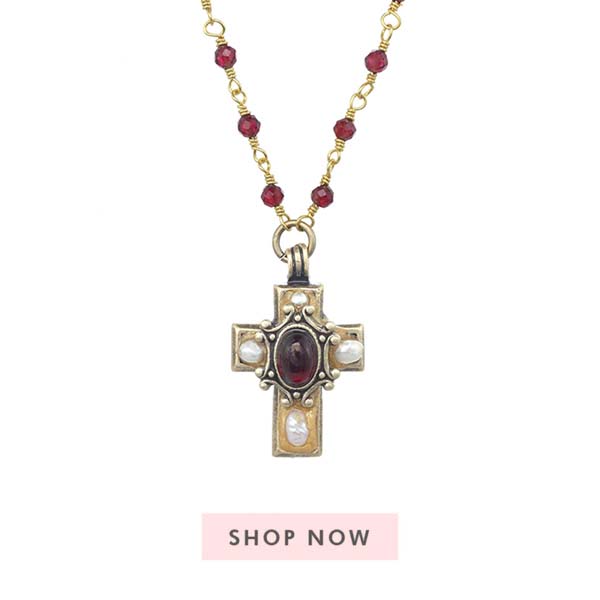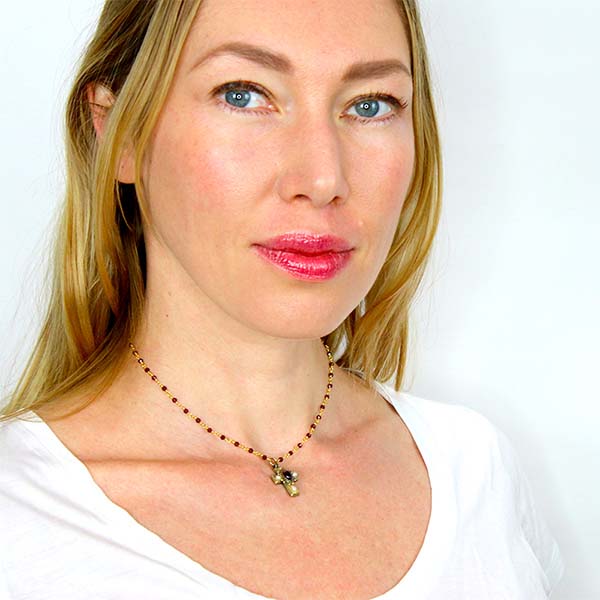Evil Eyes
Evil Eyes
Growing up in Israel, the evil eye symbol was all around me. People would use evil eye charms for good luck or use them as decoration to bring good energy to their homes. If you've never seen one, look below for some images of traditional evil eyes (add pictures) My upbringing heavily influences my work, and to this day I love to use a versions of this ancient symbol in my jewelry.
Lately I’ve noticed evil eyes growing in popularity with everything from evil eye phone cases to t-shirts. I love this trend and I think now is a great time to write about the meaning and history behind this symbol for anyone hesitant to rock an evil eye!
One of my favorite things about the evil eye is that versions of it can be found in almost every culture around the world. From Brazil to Italy to Israel, the evil eye has been used in various cultures since the times of Ancient Greece. It’s truly universal and although it has a spiritual quality to it, it can be worn by people of any religion, race or ethnicity!
The meaning of the evil eye varies slightly based on culture, but the general idea is that the evil eye can serve as a talisman to protect you from negative energy and bad luck. By wearing evil eyes or displaying them in your home you are protecting your peace of mind and bringing good luck to yourself. It’s such a joy to make evil eye jewelry because it spreads positivity and can be worn by anyone. Click the links below to see some of my favorite evil eye pieces.
Hamsas
Hamsas: From The Artist's Studio
If you are a fan of my work you have no doubt seen a hamsa before!
This unique hand shaped symbol, most commonly seen in jewelry and home decor, is actually an ancient Middle Eastern sign of good luck and protection. In Israel, where I grew up, people frequently had whole collections of hamsas hanging on their walls, made of glass, metal and ceramics. The hamsa represents good luck and protection from negativity. Much like the evil eye, I love using the hamsa symbol because it spreads positivity and light! Although the hamsa originated in the Middle East, anyone can wear or display a hamsa regardless of religion or nationality.
So now that you know more about hamsas, you may be wondering in what situations to wear or gift them. A hamsa bracelet or necklace makes a thoughtful gift, especially for a friend going through a hard time who may need a good luck charm. Hamsa wall plaques are a great wedding or housewarming gift and help bring light and love into a new relationship or home. But ultimately, hamsas can be worn, displayed or gifted at any time of year and are not season or holiday specific!
I love seeing this symbol that is part of my culture and heritage now being appreciated and worn by all kinds of people. If you’ve been curious about the hamsa before or are hesitant to purchase one for yourself I hope this blog entry has changed your mind.
Garnet
Hello everyone! Today I wanted to write about one of my favorite gemstones, garnet! It’s a gorgeous stone with a rich burgundy color that flashes bright red in the sunlight.
I’ve used garnet in so many of my collections (as you’ve likely noticed if you’ve been a fan of mine). This gorgeous color continues to inspire me and I hope this entry will give you a new appreciation for this often overlooked gem. Read below for some fun facts on this gemstone.
Although we typically think of garnet as a deep red color, it actually comes in a huge variety of shades such as green, yellow, blue, purple and even clear.
Garnet is the birthstone for the month of January.
Garnet is thought to ignite love and passion and reenergize its wearer
The word garnet is derived from the latin word for pomegranate, since the small red stones look so much like a pomegranate seed
Garnet has been used in jewelry since Ancient Roman times (which may explain it’s regal and timeless quality!)
If there are any other stones that you’re curious about let me know in the comments!

